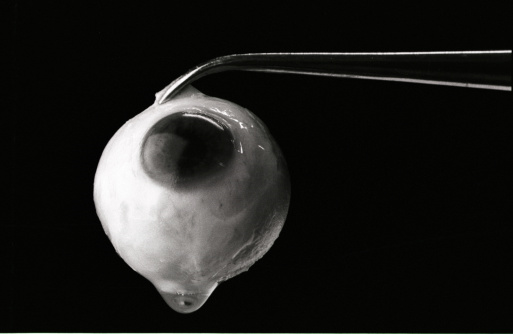Dec 30, 2025
Dec 30, 2025

India has the largest burden of global blindness. A considerable number of Indians also suffer from significant impairment of vision that threatens their ability to be physically or financially self-sufficient. The cumulative loss to the country’s gross national product consequent to this is estimated to be $11.1 billion. While the problem is formidable, the need to take up the challenge of curtailing it is compelling.
Some 27 million Indians have moderate sight impairment; nine million are classified as bilateral blind; 260,000 children are blind. The number of corneal blind people in India is 4.6 million. Of these, 90 per cent are below 45. They include 60 per cent who are below 12 years of age. Looking at the root causes, 66 per cent of the cases are preventable or curable. Out of the 4.6 million people, at least three million can benefit from corneal transplantation.
Donated human eyes help preserve and restore sight through corneal transplantation, research and education. More than 90 per cent of corneal transplant operations successfully restore vision in people suffering from blindness due to corneal problems. Infants born with cloudy corneas gain sight from transplantation.
Eye banks obtain, evaluate and distribute eyes donated by humanitarian-minded citizens for use in corneal transplantation, research and education. To ensure patient safety, the donated eyes are evaluated under strict medical standards. Donated eyes that are not suitable for corneal transplantation are used for valuable research and education purposes.
The cornea is the clear, transparent dome in front of the “black portion” of the eye. It is also the main focussing surface, which converges light rays as they enter the eye to focus on the retina. It is thus the most important part of the optical apparatus of the eye. Loss of transparency directly results in loss of vision.
A corneal transplant is an operation that replaces the opaque cornea with a clear cornea obtained from a human donor eye. A cornea may become opaque owing to infection, injuries, iatrogenic causes such as malpractice and improper post-operative care, malnutrition, or congenital-hereditary reasons.
Practically anybody from the age of one can be an eye donor. There is no maximum age limit. Poor eyesight and age make no difference. Those who wear spectacles, those who have had cataract surgery, diabetics and those who are hypertensive can donate eyes. Even a person who is blind from retinal or optic nerve disease can donate eyes, provided the cornea is clear. Those who have died of unknown causes, or due to infectious rabies, syphilis, infectious hepatitis, septicemia, and AIDS cannot be donors.
One can bequeath eyes by taking a pledge, resolving to donate them after death. But it requires the help of relatives or friends to carry out the pledge and desire. The next-of-kin can give consent for a donation even if the deceased family member has not signed a pledge form.
The eyes need to be collected within six hours, and so the eye bank has to be called as early as possible. After making the call, both eyes will need to be closed and covered with moist cotton. Any overhead fans should be turned off. If possible, antibiotic eye drops may be periodically instilled in the eyes in order to reduce chances of infection. The head end of the body could be kept raised by about 6 inches in order to reduce any bleeding during eye removal.
The removal will leave no visible signs that would interfere with common funeral arrangements and practices. There is no religious conflict involved. The donation actually gives a gift of life or sight to others. As such, it is consistent with the beliefs and attitudes of all major religious and ethical traditions.
The whole eye cannot be transplanted, only the cornea can be. The rest of the eye is used for therapeutic use, research and education.
The ultimate decision about usage for transplantation will be made after evaluation.
A living person cannot donate eyes. A recipient is not told who donated the eye: the gift of sight is made anonymously.
At the eye bank, the donor corneas are strictly evaluated by means of various procedures including slit lamp examination, serology examination, and specular microscopic evaluation by specialists. The chosen corneas are removed from the eyeball and preserved in special storage solutions that can keep the cornea healthy for 14 days. Good quality corneas are used for corneal transplant procedures. The donor corneas are used for various types of keratoplasty procedures including multiple procedures. The donor sclera is preserved in absolute alcohol and used for surgical procedures concerning glaucoma, ocular trauma and oculoplasty.
The remaining parts of the donor eye ball are used for research by the research units of Microbiology, Biochemistry, Ocular Pathology, and Molecular Biology.
Read Also: Ageing and Vision Care
Image (c) Gettyimages.com
This article was orginially published in the Hindu on August 24, 2008.
19-Aug-2013
More by : Irungovel P Arunachalam